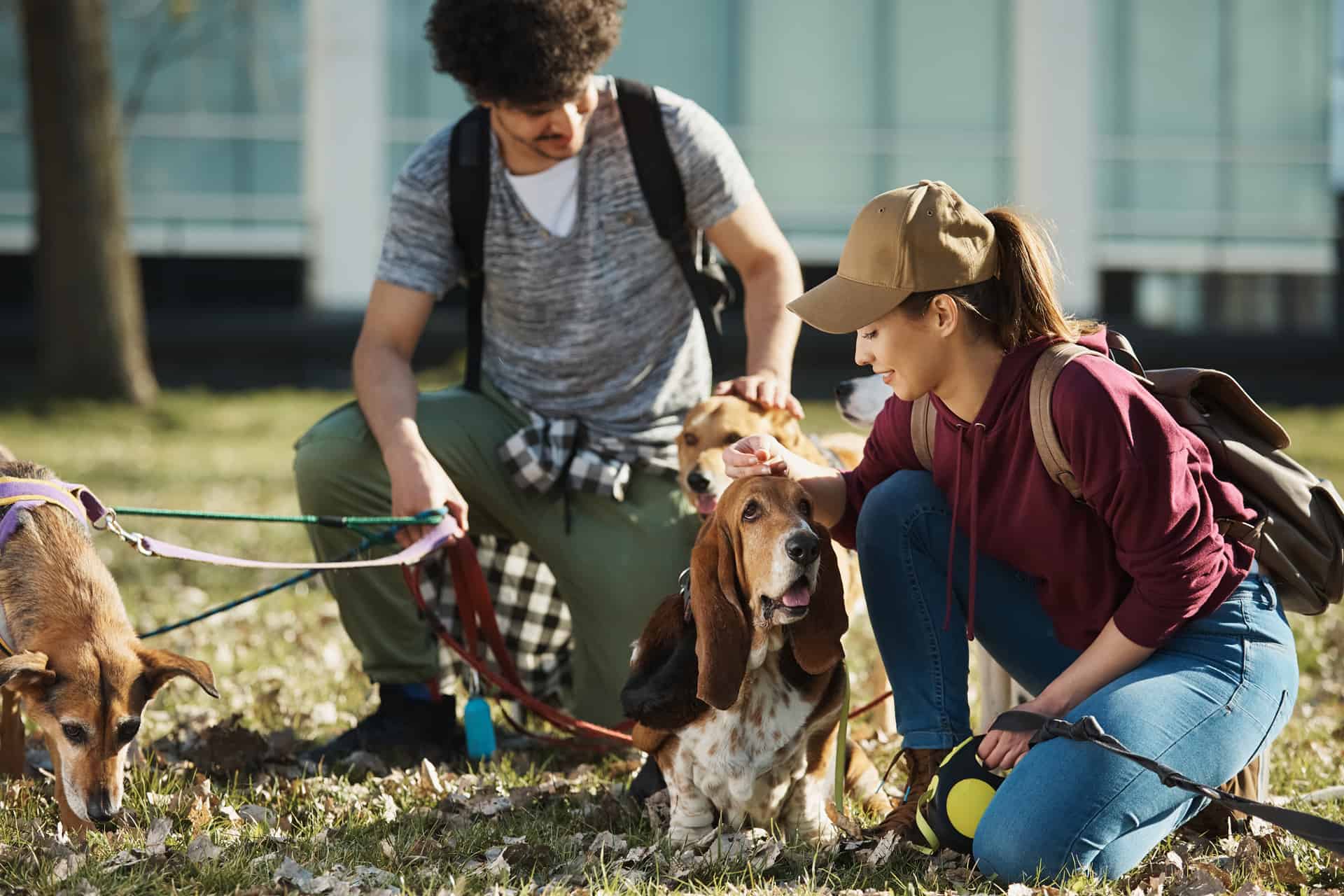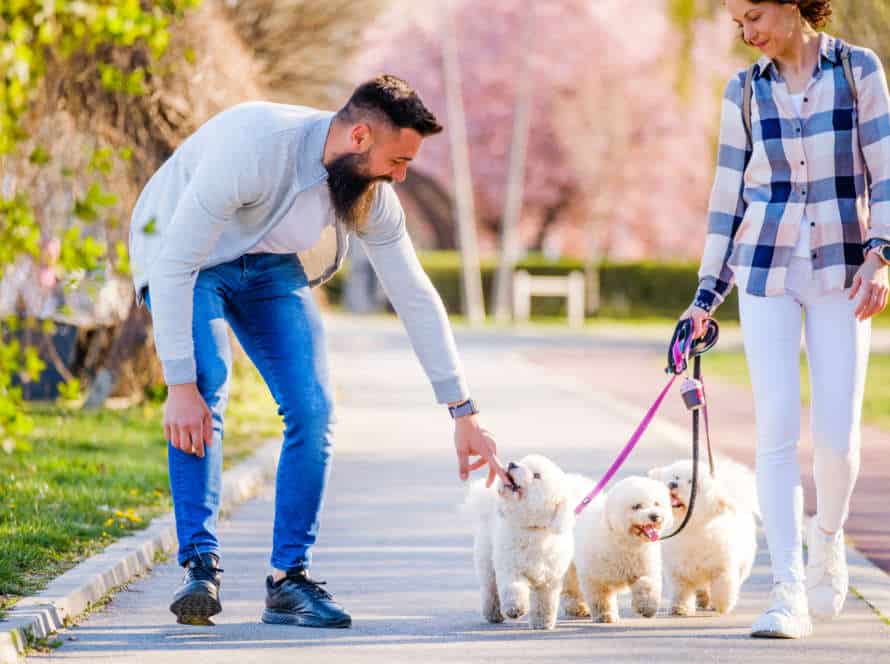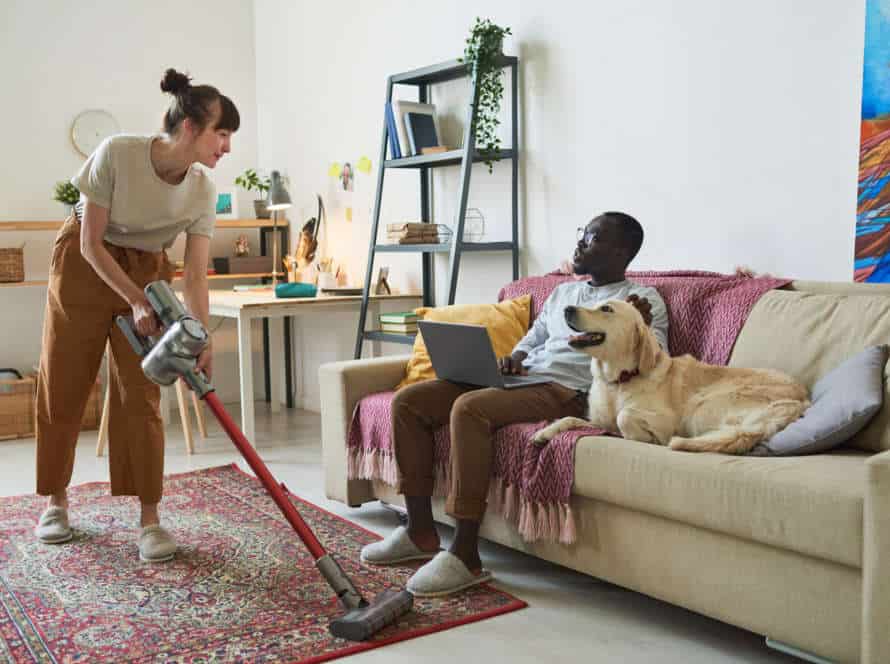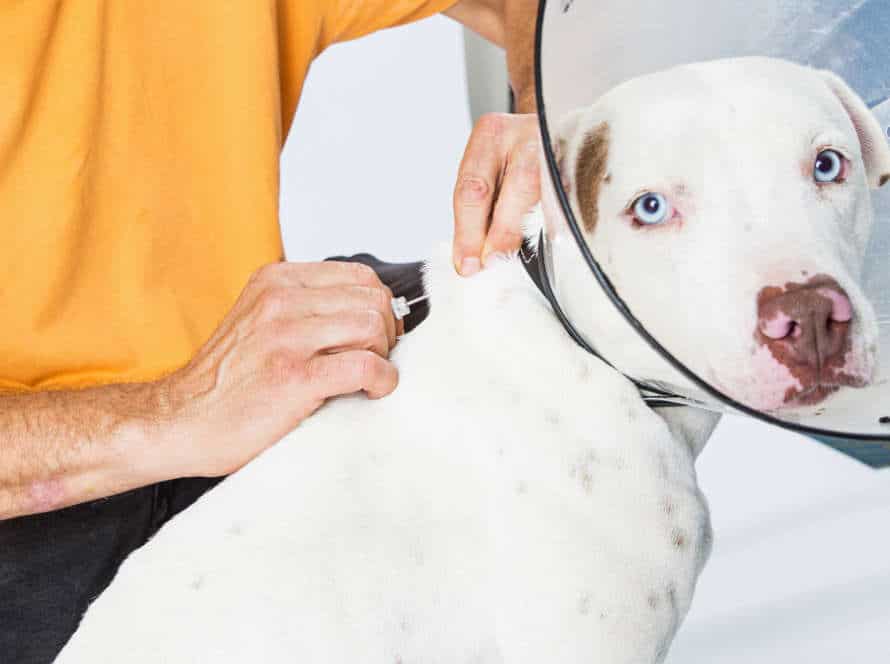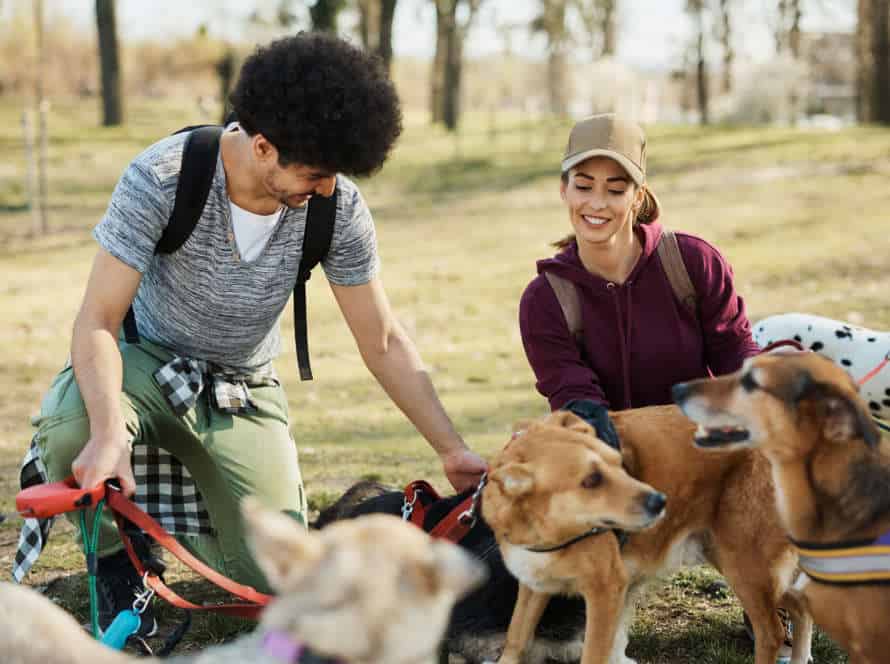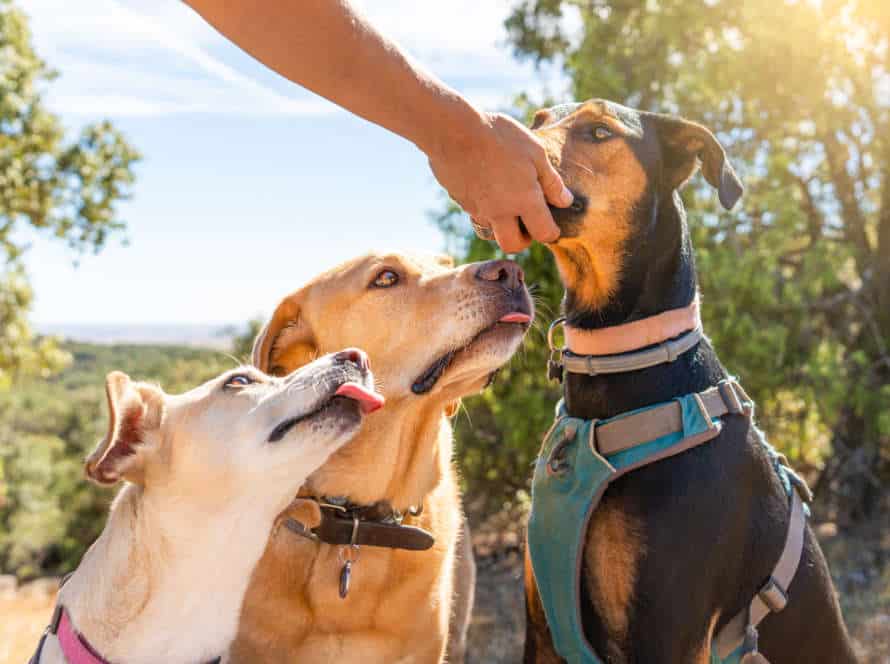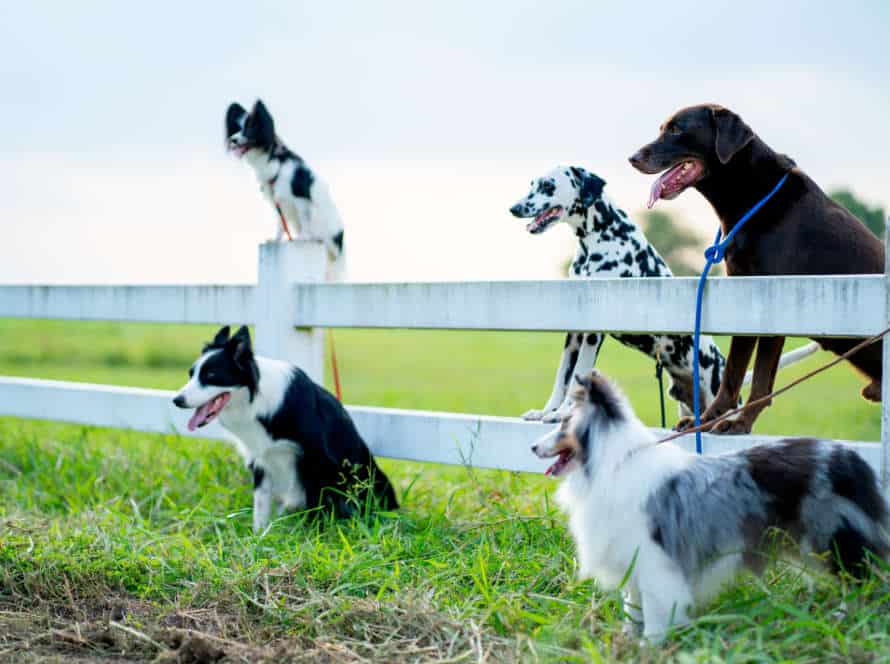How to Successfully Transition a New Dog into Your Home
Bringing a pup into your home can be an awesome experience if done correctly. Here are some ideas to help you and your new pet have a good start:
- Start Slowly: Let your new pup get used to the house gradually. Put their bed, toys, and food/water bowls in a specific area.
- Create a Safe Place: Make a fenced-in, but accessible space for the pup to relax when they want some alone time or feel overwhelmed.
- Introduce Home One Room at a Time: Introduce the pup to your house by showing them one room at a time. This will help them adapt and reduce accidents.
- Establish a Routine: Dogs love routine, so set up a regular one early on to make life together easier.
- Provide Affection: Give love and affection to your pup to make them feel secure and help them adjust faster.
- Offer Training: Dogs need structure and discipline, so give them clear boundaries and train them from the start to avoid behavioral issues.
Pro tip: The first few days are vital. Take your time, make sure the environment is safe, and show your pup kindness and patience. In return, they will give you loyalty and love.
Preparing your home for your new dog
Ready your home for your new pup! Follow these tips for a simple transition and a strong bond with your pet:
- Get the essentials: a bed, bowls, collar, leash, and toys!
- Remove potential hazards like toxic plants, cords, and small objects.
- Designate an area for food, water, and bed. Let pup explore more of the house as they get comfortable.
- Establish a routine: feeding, exercise, and playtime.
These steps create a safe environment for your pup and set the stage for a happy future together!
1.1 Pet-proofing your home
It’s key to pet-proof your home if you want to bring a doggy into your abode. This will protect your pup and prevent any destruction of your things.
A few tricks to pet-proof:
- Take away any unsafe stuff, like chemicals, objects with sharp edges, or items that can be gobbled up.
- Keep food and dirt out of reach, so your pet won’t ingest anything nasty.
- Secure loose wires and cords, so your pet won’t chew them or get shocked.
- Cover up electrical outlets and make sure all appliances and electronics are off when not used.
- Clear out toxic plants and store medicines and cleaners in a safe place.
By pet-proofing your home, you can create a secure atmosphere for the new pup and relish their presence without any concerns.
1.2 Creating a designated space for your dog
Designating a space for your pup is essential to a successful home integration. These tips will help:
- Pick a quiet area of your home, away from the hustle and bustle.
- Use a comfy bed or crate to create an inviting environment.
- Add beloved toys, treats, and blankets so they feel secure.
- Use positive reinforcement such as treats or praise to get them to use their space.
- Gradually increase the area they have access to, always supervising.
Pro Tip: Having a designated space sets up boundaries and comfort, making the transition a smoother one.
1.3 Purchasing necessary supplies
To introduce a pup to your home, it is important to buy the necessary supplies. These will make sure your pup is safe, comfy and healthy. Consider these essential items:
- Food and water dishes.
- A cozy bed.
- Collar, leash or harness.
- ID tag, with your details.
- Food and treats based on age and size.
- Toys to keep them entertained.
- Cleaning supplies for any messes.
- Grooming tools for fur and nails.
Each dog is special and needs may differ – ask your vet or a dog trainer for advice.
Introducing your dog to your home
Bringing home a pup is a thrilling and daunting task. Here are some hints on how to make the transition go smoothly:
- Get the house ready: Before your pup arrives, make sure your home is safe and pet-proofed. Take out anything dangerous or breakable, and ensure your furniture and appliances are okay for a pet. Also, set boundaries for your dog – like which furniture they can and cannot sit on.
- Set up a routine: Dogs love regularity, so create a daily routine for your pup. This includes feeding times, toilet breaks, exercise and playtime.
- Introduce your pup carefully: Show your pup one room at a time. Let them get comfortable in each space. Also, introduce them to any other pets or family members slowly, and only when supervised.
- Loads of love and cuddles: Dogs are social creatures, they need love and attention. Give your new pup plenty of love and positive reinforcement, so they feel welcome and calm in their new home.
2.1 The first introduction
Introducing your new pup to the family is essential for the transition to go smoothly. Here’s some advice for a pleasant experience:
- Pick a peaceful spot like a park or a silent garden.
- Let the dog approach you and your family at its own speed.
- Don’t make direct eye contact or attempt to pet the dog right away.
- Reward good behaviour with treats or use a cheerful voice.
By following these tips, you can create a positive first impression. This sets the scene for a successful transition and a blissful life with your new furry companion!
2.1.1 Bringing your dog home
A new pup coming home can be thrilling! But, you gotta be ready. Here’s what to do:
- Create a space for them, get food & supplies, and make the area pup-friendly.
- Start slow; let them explore 1 room at a time.
- Keep to a routine with feeding, play, and training.
- Be patient; let them get used to it. Give lots of love and care. Get a pro if you need help.
- Remember: Consistency & patience are key. Stay positive and show them love as they adjust.
2.1.2 Introducing your dog to family members or other pets
Introducing your pup to relatives or other animals is key to a successful transition into your house. Here are some tips for an easy introduction:
- Meet family members one at a time, in a peaceful and controlled setting.
- Use treats and compliments to encourage good behavior.
- Supervise all meetings between the new dog and other pets, mainly in the first few weeks.
- Go slowly and avoid overloading your new dog with too much all at once.
By following these instructions, you’ll help your pup feel safer in their new home and ensure a content and peaceful transition for everyone.
2.2 Creating a routine
Constructing a routine is necessary when introducing a new pup to your household. It helps the pup get used to its new environment and makes it feel secure and comfy.
Here are few tips to create a routine:
- Schedule consistent mealtimes
- Take it for regular walks to form a bathroom routine
- Set a permanent bedtime
- Make a particular playtime and instruction time every day to develop bonding
Attempt to keep to the routine to avoid disorienting the pup and ensure a tranquil transition. Bear in mind, transitioning to a new home can be worrying for pups, so an established routine will help reduce tension and foster a positive atmosphere.
2.2.1 Establishing a feeding schedule
Creating a feeding routine is key for bringing a new pup into your home. It helps them adjust to their new environment and sets a pattern for other parts of their care. Here are some tips to build a successful feeding routine:
- Work out the best amount of food for their size, weight and age.
- Pick a high-quality food that meets their nutritional needs.
- Decide how many meals they should have a day based on age and activity level.
- Make a feeding plan that fits their needs and your daily routine. Stick to it as much as possible to avoid disrupting their pattern.
- Check their eating habits to make sure they’re eating enough and adjust the schedule if needed.
Pro tip: Providing water, toys and an exercise plan alongside the feeding schedule can help set up an all-around routine for your new pup.
2.2.2 Creating a walking schedule
Creating a walking schedule is key for welcoming a new pup. Here are some tips to keep in mind:
- Start slow – Give short walks to get your pup used to their new environment.
- Be consistent – Dogs love routine so aim for consistent walk times every day.
- Consider pup’s needs – Age, breed, size – all play a role in how long and how often you walk them.
- Stay safe – Be aware of potential hazards. Leash your pup & use reflective gear/lights in low-light.
Pro tip: Consistent walks help your pup feel secure & develop good behavior.
2.3 Positive reinforcement for good behavior
Positive reinforcement is a great way to get your pup to behave. Here are some tips for making it work:
- Give treats or words of praise when they do something right like sitting, staying, or coming when called.
- Be consistent with rewards and compliments, so the pup knows what’s wanted.
- Don’t use punishment or negative reinforcement – it’s confusing and won’t help.
- Keep training short and frequent, so the pup doesn’t get overwhelmed.
- Be patient; positive reinforcement takes time and consistency to be effective.
2.3.1 Potty training
Potty training a pup can be tough. Here are some tips to make it easier:
- Designate a potty area in the yard.
- Make a consistent feeding schedule and take them outside right after.
- Give treats or praise when they go potty outside.
- Pay attention to their behavior and take them out if they need to go, like sniffing or circling.
- Crate train your dog and use the crate when you’re not home.
- Be patient and consistent. Potty training takes time and accidents will happen.
Pro Tip: Keep your pup on a steady potty schedule to avoid accidents in the house.
2.3.2 Basic commands
Essential commands are needed to help a new pup adjust to their home. Here’s some of them to teach:
- “Sit”: Hold a treat above the pup’s head and say “sit”, pushing down its bottom. Give the treat when it’s sitting.
- “Stay”: Gradually increase the sit time until they can stay in place up to 5 minutes. Give a treat when it stays without moving.
- “Come”: Call its name and say “come” while holding a treat out. Treat when it comes.
- “Down”: Hold a treat close to its nose and say “down” while moving your hand towards the ground. Give treat when pup is in the down position.
With patience and consistency, the pup will learn these commands and be a well-behaved part of the household.
Keeping your dog well taken care of
To transition a new pup successfully into your home, careful planning and preparation is key. Here are some tips to make sure your pup is well taken care of:
- Designate a spot for them with a bed, food/water bowls and a few toys.
- Introduce your pup to your home and family members one room and one person at a time.
- Maintain a regular feeding and exercise routine to aid your pup’s adjustment.
- Be patient and consistent while training, using positive reinforcement, plenty of praise and treats.
- Schedule a vet checkup right after bringing your pup home and keep up with regular vaccinations and preventative care.
- Ultimately, make sure your pup feels comfortable, safe and loved in their new home – this will help them have a long, healthy and happy life.
3.1 Regular veterinary checkups
Scheduling regular vet check-ups is an important part of bringing a new pup home.
Why?
Well, they make sure your pup is healthy and has the right vaccines. Plus, this helps create a trusting bond between your pup and their vet. The check-ups also help detect any hidden health issues that would otherwise go unnoticed, like dental problems or illnesses.
By prioritizing your pup’s health with consistent care, you’ll give them a strong foundation for a happy life with you.
3.2 Proper grooming and hygiene
Grooming and hygiene are must-haves for a successful new pup transition. Here are some tips:
- Bathe the pup. Get rid of dirt and parasites from their previous environment.
- Start brushing. Help them get used to it and keep their coat clean.
- Check their ears. Bacteria and infections breed in dirty ears. Clean them often.
- Keep your home clean. Wash bedding. This prevents pests and odors and promotes healthy living.
3.3 Mental and physical stimulation through play and exercise
Mental and physical stimulation is essential for introducing a new pup to your home. Not only does it help keep them healthy, but it also stops bad behaviours caused by boredom or stress. Here are some tips:
- Playtime: This is the ideal opportunity for your pooch to learn commands, bond with you and vent energy. Consistent play sessions provide a release of energy and help them stay active.
- Walking: Take your pup on daily strolls! It provides physical stimulation and mental enrichment through new sights and smells. Plus, exercise builds muscle, boosts circulation and strengthens the immune system.
- Interactive toys and games: Include interactive toys and games in their routine, like hide-and-seek, fetch and puzzle toys. They offer mental stimulation.
Pro tip: Have a consistent exercise schedule, and stick to it. Having structure will make your pup thrive, and stop them from causing destruction.
Overcoming Challenges
Introducing a pup to your house can be hard, but with the correct approach, the change can be effortless. These tips can help you when introducing a new pup:
- Make an area for your pup.
- Have a routine for meals, exercise, and play.
- Start obedience training right away to create rules and boundaries.
- Don’t rush your pup as they adjust to their new environment.
- Give them positive reinforcement for good behavior.
Keep in mind, each pup is different and transitioning may take time. With patience and consistency, you will make a strong bond with your new fur buddy.
4.1 Separation anxiety
Separation anxiety is a frequent problem which dogs can face while adapting to their new home. This can lead to destructive behavior, too much barking, and other unpleasant activities. Yet, with tolerance and appropriate training, you can aid your pup to conquer separation anxiety and make the move into your home simpler.
Here are some useful advice on how to deal with it:
- Start with brief intervals of being parted and then step by step increase the time apart.
- Design a pleasant and secure space for your dog to spend time in when you’re gone.
- Use positive reinforcement methods to motivate good behavior and reward your pooch for remaining tranquil.
- Take into account using a calming aid, like a pheromone spray, to help your pup relax during your absence.
Keep in mind, the key to success in transitioning a new dog into your home is patience and regularity in training.
4.2 Nervousness and fear
Bringing a pup to your home may make them anxious or scared. Here are a few ideas to help the process go smoothly:
- Begin slowly: Let your dog get used to the new atmosphere. Initially, limit their access to the house then increase it bit by bit.
- Give them a secure spot: Set up an enclosed space, such as a crate or a room, where your pooch can feel safe and content during the transition phase.
- Set up a routine: Develop a regular routine for meal times, taking walks, and playing. Regularity can assist your pup in feeling more at ease and confident in their new home.
- Be patient: Your furball needs time to adjust to the new atmosphere. Don’t pressure them to do something they’re not ready for.
Remember, every dog’s transition period is unique, and patience, consistency, and positive reinforcement are the keys to a successful transition.
4.3 Aggressive behavior
Aggressive behavior is a common issue when bringing a new pup home. Fortunately, there are steps to take to address and avoid it.
Provide structure and set rules: Let the pup know what behaviors are acceptable and which ones aren’t.
Socialize your pup: Introduce them to new people, animals, and experiences to make them feel secure in unfamiliar situations.
Use positive reinforcement: Give treats, toys, or attention as rewards for good behavior to motivate them to repeat it.
Consult a professional: If the aggression persists or gets unmanageable, get assistance from a dog trainer or behaviorist.
Remember: Patience and consistency are key for a successful transition. Taking the time to form trust and positive habits will ease their adjustment to their new home.
Building a strong bond with your dog
Building a strong bond with your pup is a process that needs lots of patience, time, and effort. Here are a few tips to help transition a new dog into your home:
- Create a safe and inviting space for them. Let them have their own area to rest, play, and feel secure.
- Set up a routine and follow it. Dogs love structure and predictability. Have a schedule for feeding, exercise, and training.
- Show them love and kindness. Spend quality time with them. Reward them for good behavior. This will help build trust between you two.
- Be patient and stick to it. Building trust takes time. Don’t give up! With time and consistency, your bond with your dog will be strong.
5.1 Spending quality time with your dog
Spending quality time with your pup is key in introducing them to your home. Let’s explore a few ways to make it happen!
- Play fetch – Exercise and a quality bonding activity! Plus, you get to teach your pup obedience and retrieval skills.
- Take walks – Get some physical exercise and mental stimulation. Your pooch gets to explore the world and get closer to you.
- Training sessions – Spend time together and teach important commands and behaviors. Plus, it shows you as the pack leader, creating trust.
- Cuddle time – Nothing better than cuddling up with your pup! It also helps them feel secure in their new home.
Pro Tip – Quality time with your pup is great for both of you! It boosts your mood and reduces stress, for a happy life.
5.2 Understanding your dog’s behavior and personality
Comprehending your pup’s behavior and character is an essential action for successfully settling a new pup in your home.
Have a look at these aspects to consider while evaluating their behavior:
- Body language: Notice their tail wagging, eye contact, and how they hold their ears and mouth. These can give you clues about their mood, personality and show if your pup is comfy around new people, animals, and environments.
- Personality traits: Different breeds have different typical traits to be aware of, however individual dogs can have unique personas. Focusing on their temperament can assist you in controlling their behavior and supply the right atmosphere for them.
- Socialization: Right socialization is essential to raising a well-behaved pup. Expose your pup to distinct people, animals, and environments to assist them in developing social abilities.
- Health: A pup’s behavior can sometimes be an expression of their physical and mental health. Ensure they are getting the correct nourishment, exercise, and veterinary care to keep them healthy.
Comprehending your pup’s behavior and character can lead to better communication, a stronger bond, and a general successful transition into their new home.
5.3 Positive reinforcement for good behavior.
Positive reinforcement is essential for a smooth transition of your new pup into your home. This method of training rewards behaviors that are positive, rather than punishing those that are not. Here are some tips to utilize positive reinforcement:
- Give treats and appreciation: Provide treats and verbal compliments when your pup follows commands, goes to the bathroom outside, or interacts with other animals and people.
- Be consistent: Use positive reinforcement each time your pup does something good. Even if it is something small. Consistency is key!
- Get a clicker: A clicker is an awesome tool for positive reinforcement training. It helps your pup understand precisely when they have done something right and links that behavior with a reward.
- Avoid punishment: Do not use negative reinforcement such as scolding or physical punishment, as this can affect your pup’s mental and emotional health. Use positive reinforcement for a happy and healthy transition.
Frequently Asked Questions
1. How do I introduce my new dog to my current pets?
Introduce your new dog to your current pets in a neutral location, such as a park or a friend’s backyard. Keep both pets on a leash and allow them to sniff each other. If there are no signs of aggression, bring them back to your home and supervise their interactions for the first few weeks.
2. How long will it take for my new dog to adjust to our household?
The adjustment period varies from dog to dog, but it typically takes a few weeks for a new dog to get used to its surroundings. Patience, consistency, and positive reinforcement will help your new dog feel more comfortable and secure in their new home.
3. Should I crate train my new dog?
Crate training can be a helpful tool for potty training and keeping your new dog safe when you are away from home. Introduce your dog to the crate slowly, using positive reinforcement and treats. Make sure the crate is appropriately sized and comfortable for your dog.
4. How can I help my new dog feel less anxious?
Creating a routine and providing plenty of exercise and mental stimulation can help reduce anxiety in a new dog. Providing a safe space, such as a crate or a designated room, can also help your new dog feel more comfortable.
5. How should I handle accidents in the house?
Accidents in the house are normal during the adjustment period. Clean up accidents thoroughly with an enzymatic cleaner to remove any lingering odors that could encourage your dog to go in the same spot. Never scold or punish your dog for accidents, as this can cause anxiety and set back the potty training process.
6. When should I start training my new dog?
You can start training your new dog as soon as they come home. Basic obedience training, such as sit, stay, and come, can help strengthen the bond between you and your new dog and set a foundation for future training. Positive reinforcement training methods work best and can help build your dog’s confidence.

